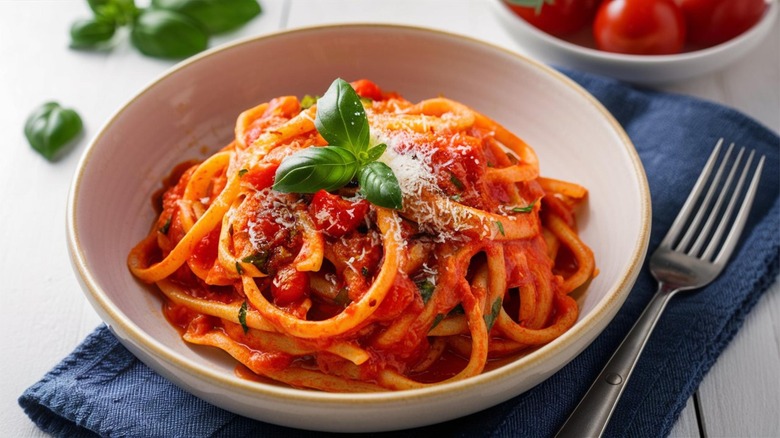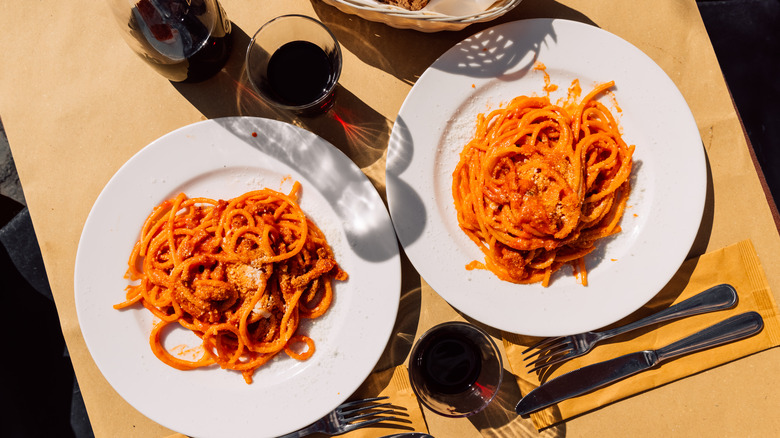It Couldn't Be Easier To Pair Pasta And Wine With Pomodoro Sauce
The spaghetti is made, the garlic bread is in the oven, and the salad is on the table. What's missing? The wine, of course. When it comes to pairing wine with pasta dishes, it is best to select one that complements the pasta sauce rather than the dish in its entirety. For a classic pomodoro sauce — which is made of tomatoes, olive oil, garlic, basil, and salt — it has never been easier to pair a wine with the savory dish, according to Rosanna Scotto, co-owner of Fresco by Scotto.
Scotto, who operates the New York City Italian restaurant with her daughter Jenna and mother Marion, revealed their tricks for working with pomodoro sauce. "We love to pair pomodoro sauce with spaghetti because its lightness pairs well with the simplicity of the sauce," she tells Chowhound exclusively. The sauce's simple nature makes it easy to pair the dish with a glass of wine — red or white. "Pomodoro sauce is so versatile, you can pair any wine with it," the restaurateur and news anchor notes. That said, next time you are setting up for your big pasta dinner or are dining out at a nice restaurant, you can pick a bottle of wine of your choosing without worrying about the flavors clashing, as long as you go the pomodoro route.
How to pair wine with pastas
Beyond pomodoro, there are several popular types of flavorful pasta sauces like Alfredo (which can be made with cottage cheese!) and puttanesca. Luckily, there are a few tried-and-tested tips on how to pair different wines with a variety of pasta dishes. When opting for pasta with a red sauce, like pomodoro, it is often recommended to reach for a glass of rich red wine to cut through the acidity of the dish. However, some say the preference is because red wine is more traditional in Italian households as the country is known for its flavorful red wines. Other wine professionals state that heavier white wines, like chardonnay or sauvignon blanc, are great options for pasta dishes regardless of the sauce.
Sometimes, the wine color is a nonnegotiable due to preferences, so to execute Scotto's advice best, pay attention to the body of the wine. Light-bodied wines have a lower alcohol content but are more acidic, whereas full-bodied wines are the opposite and tend to have a heavier mouthfeel. For a tomato-based dish, opt for a medium-body wine to match the acidity of the pasta dish without going overboard. When it comes to cheesy pasta dishes like cacio e pepe or Alfredo, choose a light-bodied wine to add complexity to the meal. The same goes for fresh or store-bought pesto, which is more earthy and light in acidity. By opting for a light or medium-bodied wine, you can contrast the flavors and allow the pasta dish to shine.

